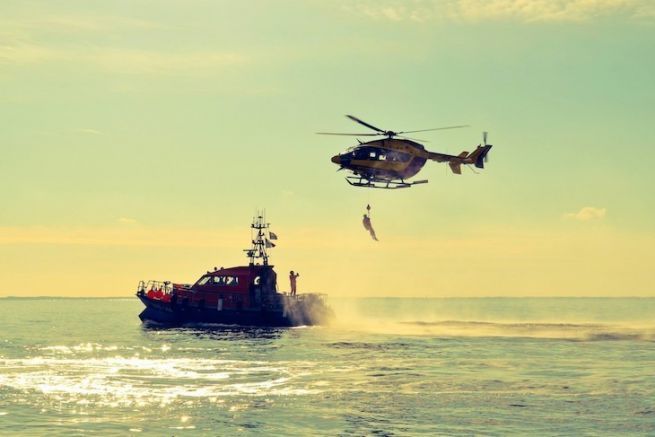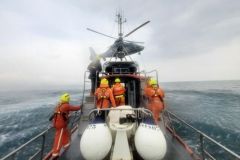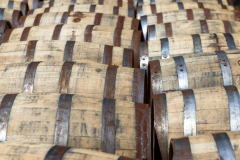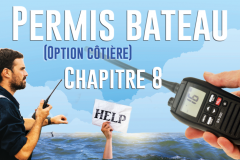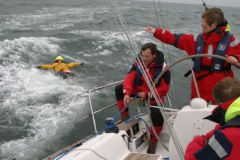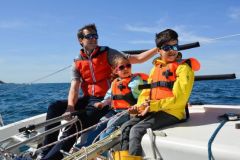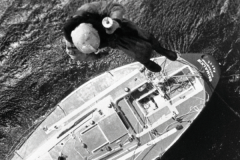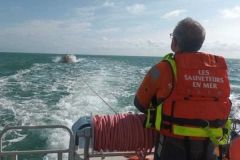That day, everything was fine. Nice sea, nice weather. Ideal temperature. At the end of the morning, a diffuse feeling of discomfort settles in one of your passengers. You're worried about his situation...
Request for assistance
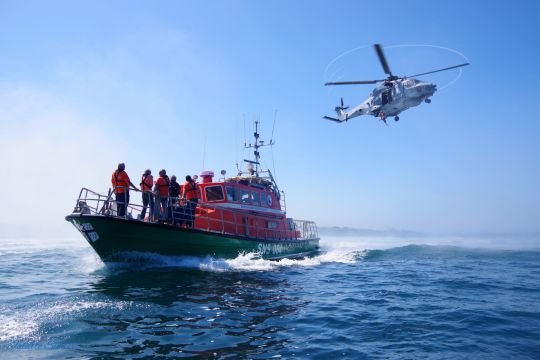
VHF switched to channel 16. " Mayday Mayday Mayday. "Silence is made on the airwaves. You have the CROSS ear. You lay out the facts. Quickly, your interlocutor asks you to switch to a working channel, which you will only leave on command. The soldier answering you will ask you a large number of questions about the passenger's condition. At some point, by telephone or VHF, you will be put in touch with a doctor. Here again, the operator will remain on the line, it is he who will be in charge of "buffering" your stress in the exchange with the medical professional.
Depending on the seriousness of the situation, several scenarios can be envisaged. CROSS will ask you to divert to the nearest port. This is an indication that the situation is not as catastrophic as it seems. Ashore, when you arrive, all the rescue means will be in place: ambulance, stretcher... will be at the quay. In some cases, to optimize the intervention, CROSS will even give you a location to reach. Respect the instructions, it is to allow your passenger to be taken into account as well as possible that these instructions are given to you.
CROSS is leading the maneuver
In cases of extreme emergency, we speak of a MEDEVAC, medical evacuation. The doctor with whom you exchanged, a professional from Toulouse from the Centre de Consultations Médicales Maritimes (CCMM) considered that there was not enough time to call upon the SAMU de Coordination Médicale Maritime (SCMM) and that it would be in the interest of the patient to plan a non-medical team. However, this team would not be any less competent. The objective is to transport your passenger as quickly as possible to a hospital with the most qualified team for the condition in question.
When the time is a little less counted, an EVAMED - medical evacuation - will be considered. It is then that CROSS will contact the SCMM closest to your area (the SCMM is located in Brest, Bayonne, Le Havre and Toulon) for the medical part. It will also use the nearest means of transport, either the marine police or civil security. Firefighters and SAMU are never used, their aircraft are not suitable for flying over water.
Only one thing to do... do nothing
The means are triggered. CROSS has explained to you what assets will be deployed, to what end and within what time frame they will be in the area. From then on, the only thing you're going to need is patience and ... to do nothing. Helicopter pilots are equipped to detect and see your boat from a great distance. There is no need, without instruction, to fire rockets or set off any signals. On the contrary, this could be counterproductive and dangerous. In the event that a person has fallen into the water and needs to be spotted from the helicopter, turn on as much light as possible towards that person. If you are the one who has fallen, turn on as much light as possible (flashlight, cyalume stick ...).
When the helicopter arrives at the area close to you, CROSS and the pilot will ask you to switch to a working frequency, which you should only leave when instructed to do so. Again, no operations of any kind are to be performed. Do not touch anything or anyone who can get out of the helicopter (especially the electrostatic discharge cable). The pilot will then be able to give you some instructions, if necessary, on how to orientate the boat, for example.
The goal is to get the camera as low and as close as possible to the deck of your boat. This is why, in some cases, you will be asked to strike the life raft or launch the dinghy, to avoid, in the case of a high mast, manoeuvres that are too risky for the aircraft.
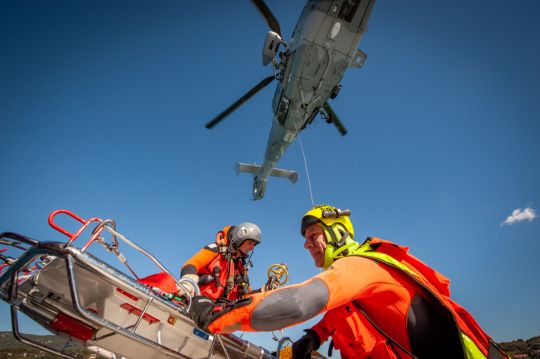
Diver on board your boat
A diver will come aboard your boat. He will take control of all operations on the boat, moving it if necessary, as required. Depending on the case (evasan or evamed), he will be joined by a doctor and a nurse, who will be able to give first aid to the injured person, putting him in conditions for transport for example.
The stretcher will be loaded onto the helicopter. In some cases, for example if the skipper is injured and nobody knows, or cannot take control of the vessel, he may be left on the area. It will be the responsibility of the owner of the boat to retrieve it.
End of the intervention
Strictly speaking, that's when the hoist will be completed. This does not signal the end of the intervention in itself. Indeed, CROSS will remain in control of the operation until the injured person is put ashore in a hospital.
You've just experienced a virtual hoist. Let's hope it will be the only one of your boating career!
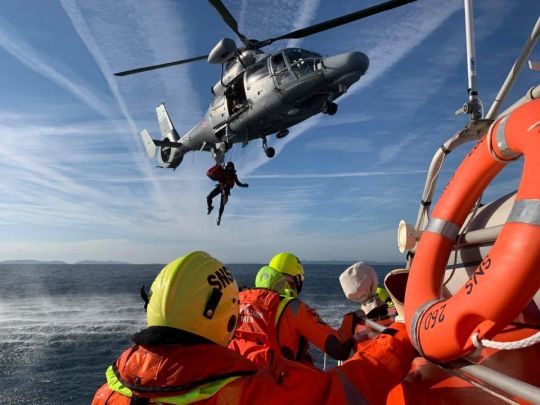
The recommendations of the authorities
When we talk to them, the authorities tell us that we must... do nothing. The yachtsman, more often than not, will naturally do nothing. The chief administrator 2nd class Sophie, head of the rescue and navigation office of the State action at sea division of the Atlantic Maritime Prefecture explains: " The noise of the rotor, the blast, the stress of the situation... will naturally mean that the yachtsman who asked for help will not take any responsibility. And that is exactly the right thing to do! Each pilot has his own approach to the intervention, some will ask for the aerials to be dropped off, others will prefer a landing on the ship's tender. There are as many different strategies as there are cases of hoisting. "
Finally, the military gives us some figures: " In 2019, 4,766 search and rescue operations at sea were conducted on the seafront (and coordinated by CROSS Corsen or Etel). 504 involved one or more air assets, for a total of 645 cumulative flight hours. "
A relatively low figure, but one that shows, if it were necessary, that the availability of rescue means is paramount, and that each request for intervention must be measured and justified. The administrator explains: " It is common for sailors suffering from seasickness or simply from great fatigue to request medical assistance, particularly when crossing the Bay of Biscay. In these cases too, the State's resources are used to provide assistance in a situation which, in substance, did not present any danger or risk to the persons concerned. "
Important accuracy : When it is carried out by the French authorities, a helicopter landing will always be free of charge, as it concerns the safety of life at sea (The SOLAS convention). However, in the Bay of Biscay in particular, if a yachtsman requests assistance and the rescue is provided by the Spanish authorities, it is to be expected that an invoice will be made, which will most often be borne by the French State.

 /
/ 